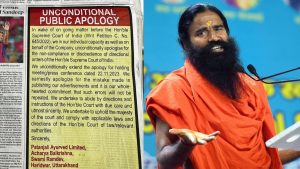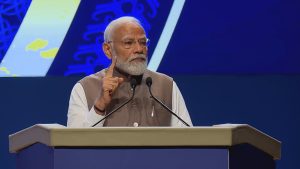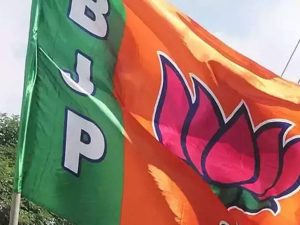New Delhi, 7 August: Indian Space Research Organization (ISRO) successfully launching its first Small Satellite Launch Vehicle Developmental Flight-1 (SSLV) and AzadiSat satellite, designed by the girls of government schools across the country, to mark the ‘Azadi Ka Amrit Mahotsav’ on the 75th anniversary of India’s Independence.
The Small Satellite Launch Vehicle is carrying two satellites ‘Earth Observation Satellite-02’ (EOS-02) and AzadiSat satellite. The weight of the EOS-02 is 142 kg. It will operate in space for 10 months, whereas AzadiSat is an eight kg CubeSat.
ISRO has launched India’s first SSLV with an aim to offer affordable ride into space and gain share in the growing small satellite launch market. Earlier ISRO used PSLV (Polar Satellite Launch Vehicle) and GSLV (Geosynchronous Launch Vehicle) to launch satellites into space.
The length of SSLV is 34 meters. This warhorse is 10 meters shorter than PSLV and can put a payload of up to 500 kg into a 500 km planar orbit. SSLV is for satellite launch of 120 tonnes and PSLV for 320 tonnes. The SSLV in its fourth stage uses the Liquid-Propelled Velocity Trimming Module (VTM) and then puts the satellite into orbit.
One of the primary advantages of a segmented SSLV is the booster motor with an open joint structure to reduce segment assembly and launch integration time. Additionally, it has a miniature, low-cost avionics system with commercially available, industrially produced components as well as a similar interstage combined structure for quick assembly and launch. The SSLV also includes a digital control system with fully in-house electro-mechanical actuators, a multi-satellite adapter deck and multi-satellite housing.
To mark the ‘Azadi Ka Amrit Mahotsav’ on the 75th anniversary of India’s independence, girls of government schools across the country have designed the AzadiSat satellite. AzadiSat carries 75 different payloads, each weighing about 50 grams. The girl students from rural areas across the country were guided by ISRO scientists to build these payloads, which were integrated by the student team of ‘Space Kids India’.
According to the Indian National Center for Space Promotion and Authorisation, AzadiSat has a selfie camera for clicking pictures of its own solar panels and LoRa (Long Range Communication) transponder.
The EOS-02 will be used to provide inputs on thermal anomalies for ancillary applications in the fields of geo-environmental studies, forestry, hydrology, agriculture, soil and coastal studies. It will operate in space for 10 months.





